This article was co-authored by Shira Tsvi. Shira Tsvi is a Personal Trainer and Fitness Instructor with over 7 years of personal training experience and over 2 years leading a group training department. Shira is certified by the National College of Exercise Professionals and the Orde Wingate Institute for Physical Education and Sports in Israel. Her practice is based in the San Francisco Bay Area.
There are 24 references cited in this article, which can be found at the bottom of the page.
This article has been viewed 171,362 times.
Running is great for the heart, lungs, and muscles. But when you cramp up, your workout can turn painful. Cramps don’t just interrupt your exercise, they can also lead to muscle injury. Cramps can be caused by not breathing deeply enough (resulting in a side stitch or stomach cramp), improper nutrition, dehydration, or skipping a proper warm up. To avoid cramping up, stay hydrated and don’t eat immediately before your run. Give yourself time to warm up and do some dynamic stretches, and ease yourself into your run. When you feel a cramp coming on, slow your pace and regulate your breathing.[1]
Steps
Adjusting Eating Habits to Avoid Stomach Cramps
-
1Do not run on a full stomach. If you drink or eat too much before running, you will be more likely to experience cramps during your run.[2] You can eat just a small, healthy snack (no more than 200 calories) about one hour before you run to provide a little extra energy.[3] A granola bar, half of a peanut butter and jelly sandwich, a few slices of apple, or a banana are good options. After eating a larger meal, waiting two to four hours before running may help prevent cramping.[4]
-
2Stay hydrated. Drink enough — but not too much — water throughout the day. Drink at least 64 ounces (1.9 L) of water each day. This will help the lining of your intestines absorb water and break down the food in your belly more quickly.[5]
- Make sure you hydrate before your run. Drink about 20 oz (600 ml) of water an hour before running so that it has time to reach your muscles. If you drink immediately before you run the water will still be in your stomach.[6]
- Take large sips of water as you run. Taking large drinks, not little sips, helps liquid leave the stomach faster.[7] Gulp some cold water (one or two gulps) during your run as needed.[8] Cold water is absorbed more quickly into your system than warm water.[9]
- You do not need fancy sports drinks or fruit juices to stay properly hydrated. In fact, fruit juices have been found to cause cramps in runners.[10] Stick to water to quench your thirst.
Advertisement -
3Avoid foods which take time to break down in the stomach. These include fibrous foods, fatty foods, and proteins. High fiber foods are associated with cramps during running. Instead, try a simple carb-based snack like a banana and crackers.[11]
- While healthy fats, proteins, and fiber are crucial for a healthy diet, eat them after you run to prevent cramping.[12]
-
4Keep a food log for days you run. A food log will provide a record of what foods are associated with cramps and which are not. For instance, if you ate cereal before running three of the four days you run each week, and during those three days you experienced cramping, you can safely conclude that there is a link between your cereal consumption and the cramping you experienced.
Stretching and Exercising
-
1Warm up. Going from inactivity straight into a run can not only cause cramps, it can also lead to injury, like a pulled muscle. A gradual warm up will get your blood pumping and loosen up your joints and muscles. Start out by walking for about five minutes, which will take your body through the full range of motion it will experience when you start running.[13]
- Add in five to six strides, or pick-ups. Jog for about two minutes, then gradually accelerate for about 100 meters, then decelerate to a walk, shaking out your legs for about 90 seconds. This is one stride.
- Do dynamic stretches. Unlike static stretching, which can be harmful if done before activity, dynamic stretches will continue to warm up your muscles, increase your heart rate and body temperature, and work your muscles through their range of motion. Dynamic stretches include skipping, butt kicks, backward jogging, hip circles, high knees, and more.
-
2Stretch when cramping begins. If slowing your pace does not relieve your cramp, you can stop and stretch to help relieve it as well. Focus especially on your abs, legs, and lower back.[14]
- Try a lunge. Place your hands, shoulder width apart, against a wall. Bring the toes of one foot against the wall as well. Extend your other leg straight behind you and push into the wall with moderate force using your extended leg and arms. Switch after ten seconds and push using your other leg. Repeat three to four times.[15]
- To stretch your core, reach your right arm up. Step the right leg back and behind the standing left leg. While reaching upwards with right arm gradually reach towards the left, slightly bending the right arm over your head. Imagine you are pulling your rib cage up and away from your hip bone (iliac crest). This stretch can be felt down the outside of the the leg stepping back, and sometimes also in the front of thigh and up the side of the torso.
-
3Work out more. The better shape you are in, the less likely you are to experience cramps. While this is little solace to the novice runner, it does offer hope that running-related cramps are probably just a phase you will pass as you build muscle and lose fat.[16]
- When you begin running, follow the 10-percent rule (10PR). This means you never increase your mileage by more than 10 percent of what you ran the week before.[17] So if you start out running one mile four days per week (for a total of four miles), the next week you will increase your distance by .4 miles (10 percent of four is .4). Add distance to your run in this way until you feel you are at your logical maximum.
- Do not run every day. Continue to reserve at least one or two days out of your week for exercises apart from running in order to give your leg muscles time to rest and recover fully.
- Do a few sets of planks before running. Hold the plank position for as long as you can without straining. Work up to 60 second holds, then consider some variations of the plank for further conditioning. Exercising the abs and core can help you avoid cramps.
-
4Vary your running style and routine. Alternate between moderate runs and more intense runs. For instance, run at your normal pace along flat, even ground, then try sprinting for 400 to 800 meters. You could also boost your muscular stamina by running uphill for at least part of your run. Exercising at more intense levels will help prevent muscle fatigue which can lead to muscle cramps.[18]
- If you have access to a track to run on, try pyramid intervals. This running technique calls for sprints of various lengths in an ascending or descending order, followed by a run at a normal pace. For instance, you might sprint 200 meters, then run at a normal pace the rest of the way around the track. You might then sprint 400 meters before continuing the rest of the way around the track. Add 200 meters in this way, up to a distance of 800 meters.
- You could also do pyramid intervals in a descending order by starting with an 800 meter sprint, then a jog at a natural pace around the track; then a 600 meter sprint followed by a jog at your natural pace; and so on down through a 200 meter sprint.[19]
Minimizing Cramps While Running
-
1Decrease your pace. If you feel cramps coming on, try slowing your pace for a few minutes. If necessary, slow all the way to a walk. Walking can give your body time to recover from the impact delivered by running. Once the pain passes, you can resume your pace.[20]
-
2Breathe deeply. Push your stomach out when you inhale and relax it as you breathe out.[21] Try a three-stage inhale and two-stage exhale. In other words, breathe in once, then again a bit more deeply, then a third time ever more deeply. Breathe out in one short and one long breath before beginning again. [22]
- Breathing out fully will allow your diaphragm (a sheet of muscle along the rib cage which pulls air into the lungs) to relax.
- Avoid shallow breathing. If you feel your breathing quicken, slow down or walk a bit until you’ve recovered control over your breathing.
-
3Press a hand into your side. Lightly pressing a finger or your palm to the place where you feel pain (usually on or just below the ribs) can relieve pain. Doing so can relax the diaphragm and stabilize your insides. Many runner instinctively press the place where they feel a cramp in order to relieve their pain. Moving the tips of your fingers around the painful area in a gentle massage can also help avoid cramping.[23]
-
4Adopt a proper running posture. Do not hunch over or bend at the waist. Lift your chest and pull your shoulders back. Keep your head up and your arms loose. Your elbows should be at a ninety degree angle. Lean your whole body forward slightly and hit the ground with the middle of your foot. Roll your foot forward toward your toe and push off from there. Bring your knees up only as high as you need to in order to get your feet off the ground. [24]
-
5Adjust your stride. It is possible cramps, particularly in your legs and feet, may be caused by an improper or inefficient stride. Talk to a trainer about a gait analysis or even a salesperson at a sports store. One possible issue might be bouncing too much as you run — meaning you are exerting more energy in pushing yourself in an up and down motion than in a forward motion. Bouncing also increases the shock that your feet, ankles, and and knees must absorb when your foot hits the pavement. To reduce bouncing, try running lightly, taking shorter strides and make an effort to keep your feet low to the ground. Also make sure you aren't running on your toes.[25]
- Make sure your foot hits the ground directly below the knee, not ahead of it, as this can lead to injury.[26]
- Make any changes to your gait slowly and gradually. It will feel strange at first — practice with short runs until it begins to feel more natural.
Expert Q&A
-
QuestionShould you not drink water if you cramp up?
 Francisco GomezFrancisco Gomez is the Head Coach at the FIT Potato Gym, a training gym established in 2001 in the San Francisco Bay Area. Francisco is a former competitive runner who helps endurance athletes train for major marathons like the Boston Marathon. Francisco specializes in Injury Rehab, Flexibility, Marathon Training, and Senior Fitness. He has a B.S. in Nutrition and Exercise Physiology & Running.
Francisco GomezFrancisco Gomez is the Head Coach at the FIT Potato Gym, a training gym established in 2001 in the San Francisco Bay Area. Francisco is a former competitive runner who helps endurance athletes train for major marathons like the Boston Marathon. Francisco specializes in Injury Rehab, Flexibility, Marathon Training, and Senior Fitness. He has a B.S. in Nutrition and Exercise Physiology & Running.
Fitness Coach No, that's not a good way to deal with cramped muscles. You're more likely to cramp up if you're dehydrated. That's true of basically any muscle cramp.
No, that's not a good way to deal with cramped muscles. You're more likely to cramp up if you're dehydrated. That's true of basically any muscle cramp. -
QuestionWhat foods should I have before a run?
 Shira TsviShira Tsvi is a Personal Trainer and Fitness Instructor with over 7 years of personal training experience and over 2 years leading a group training department. Shira is certified by the National College of Exercise Professionals and the Orde Wingate Institute for Physical Education and Sports in Israel. Her practice is based in the San Francisco Bay Area.
Shira TsviShira Tsvi is a Personal Trainer and Fitness Instructor with over 7 years of personal training experience and over 2 years leading a group training department. Shira is certified by the National College of Exercise Professionals and the Orde Wingate Institute for Physical Education and Sports in Israel. Her practice is based in the San Francisco Bay Area.
Personal Trainer & Fitness Instructor If you have a few hours before you plan on running, aim to have a meal with complex carbs and protein. If you're running within the hour, stick to a small snack with simple carbs instead.
If you have a few hours before you plan on running, aim to have a meal with complex carbs and protein. If you're running within the hour, stick to a small snack with simple carbs instead. -
QuestionIf I do have a cramp during a race? What should I do?
 Michele DolanMichele Dolan is a BCRPA certified Personal Trainer in British Columbia. She has been a personal trainer and fitness instructor since 2002.
Michele DolanMichele Dolan is a BCRPA certified Personal Trainer in British Columbia. She has been a personal trainer and fitness instructor since 2002.
Certified Fitness Trainer Running with a cramp can be really unpleasant. Sometimes the cramping will stop while you are running, but if the cramp doesn't subside after a few minutes, you may decide to slow down. Runners also use many psychological techniques to continue on through discomfort such as revisiting your motivation for running, visualization of the finish line, mentally focusing on your gait, aiming for the next landmark, etc. Use whatever techniques work for you to distract you from your discomfort.
Running with a cramp can be really unpleasant. Sometimes the cramping will stop while you are running, but if the cramp doesn't subside after a few minutes, you may decide to slow down. Runners also use many psychological techniques to continue on through discomfort such as revisiting your motivation for running, visualization of the finish line, mentally focusing on your gait, aiming for the next landmark, etc. Use whatever techniques work for you to distract you from your discomfort.
References
- ↑ https://my.clevelandclinic.org/health/diseases/15466-muscle-spasms
- ↑ https://www.healthxchange.sg/fitness-exercise/exercise-tips/cramps-while-running-types-causes
- ↑ https://health.clevelandclinic.org/the-best-fuel-for-your-body-before-playing-sports/
- ↑ Shira Tsvi. Personal Trainer & Fitness Instructor. Expert Interview. 7 January 2020.
- ↑ https://www.childrens.com/health-wellness/the-importance-of-hydration-for-young-athletes
- ↑ https://www.ucsfhealth.org/education/running-a-marathon-race-day-success
- ↑ https://www.bannerhealth.com/healthcareblog/advise-me/how-far-in-advance-should-i-hydrate-before-a-practice-or-a-game
- ↑ https://www.med.umich.edu/1libr/Mhealthy/TheImportanceofWaterWhileExercising.pdf
- ↑ https://foothillsrehab.com/blog/cold-water-vs-room-temperature-water-whats-better-for-you/
- ↑ https://www.sportsdietitians.com.au/factsheets/fuelling-recovery/cramps-stitches/
- ↑ https://www.cwu.edu/sports-nutrition/eating-competition
- ↑ https://health.clevelandclinic.org/what-to-eat-before-and-after-a-workout/
- ↑ https://www.heart.org/en/healthy-living/fitness/fitness-basics/warm-up-cool-down
- ↑ https://www.betterhealth.vic.gov.au/health/conditionsandtreatments/muscle-cramp
- ↑ https://www.msdmanuals.com/professional/neurologic-disorders/symptoms-of-neurologic-disorders/muscle-cramps
- ↑ https://orthoinfo.aaos.org/en/diseases--conditions/muscle-cramps
- ↑ https://www.brighamandwomens.org/assets/BWH/patients-and-families/pdfs/le---running-injury-prevention-tips-and-return-to-running-program.pdf
- ↑ https://runnersconnect.net/running-nutrition-articles/muscle-cramps-while-running/
- ↑ http://www.chorley-athletic-and-triathlon.org/docs/CAAT%20-%20Interval%20Workouts.pdf
- ↑ https://www.betterhealth.vic.gov.au/health/healthyliving/running-and-jogging-preventing-injury
- ↑ Shira Tsvi. Personal Trainer & Fitness Instructor. Expert Interview. 7 January 2020.
- ↑ https://www.healthxchange.sg/fitness-exercise/exercise-tips/cramps-while-running-types-causes
- ↑ https://www.ivyrehab.com/news/how-to-get-rid-of-a-side-stitch-running-cramps/
- ↑ https://www.betterhealth.vic.gov.au/health/healthyliving/running-and-jogging-preventing-injury
- ↑ https://news.sanfordhealth.org/orthopedics/over-striding/
- ↑ https://www.physio-pedia.com/Running_Biomechanics
- ↑ https://www.eatright.org/fitness/sports-and-performance/team-sports/play-ball-tips-for-the-weekend-baseball-warrior
About This Article
To prevent stomach cramps when you run, don’t have anything more than a small snack for 2 hours before running. You should make sure you're staying hydrated throughout the day, and try to drink water ahead of time so it won’t still be in your stomach when you start running, which causes cramping. During your run, take large sips instead of little ones because large sips will leave your stomach faster. If you get a cramp while you’re running, try slowing your pace until it goes away. Breathe deeply, pushing your stomach out when you inhale and relaxing it when you exhale. If it persists, take a break and do some stretches, focusing on stretching your core. Over time, the more you work out, the less frequently you will experience cramping, so stick to a regular running routine. For more tips from our Athletic co-author, like how to prevent cramps with proper running posture, keep reading!
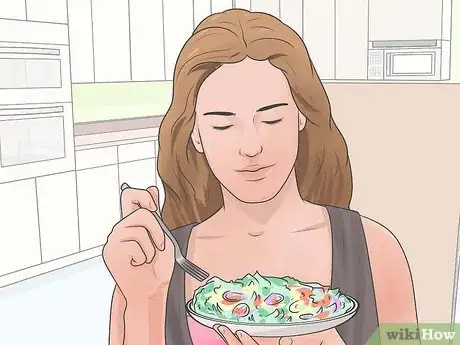

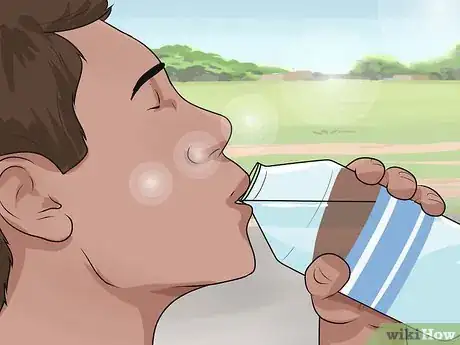
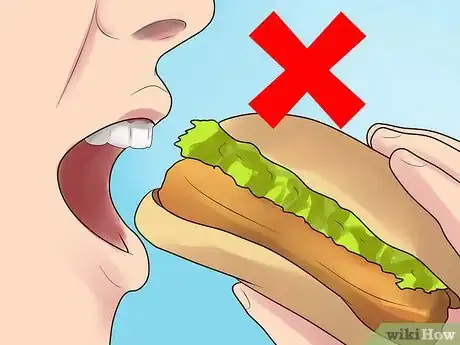
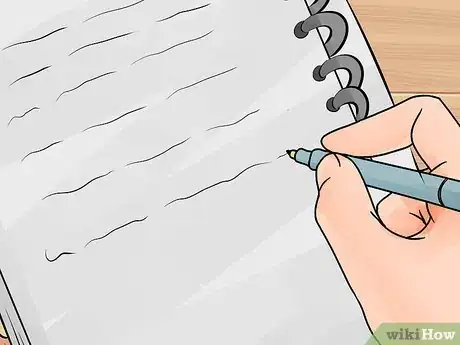
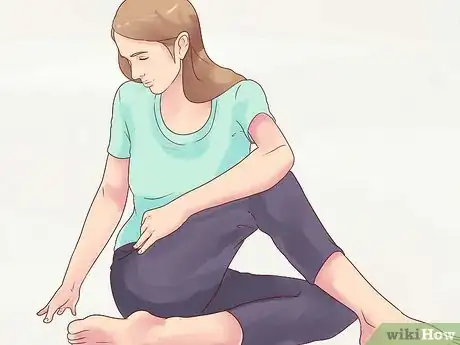
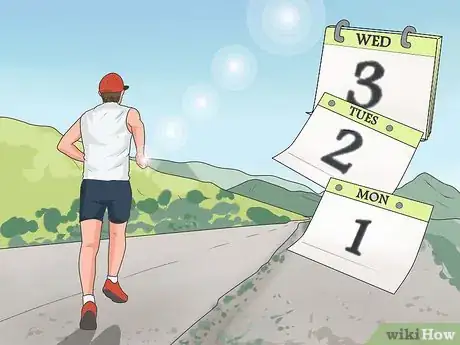
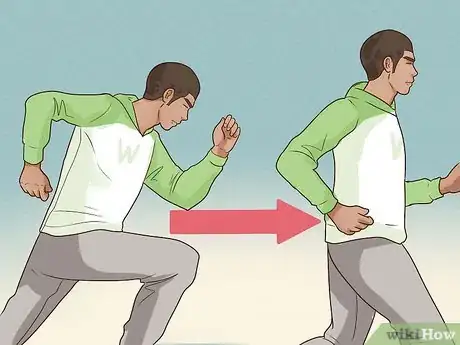
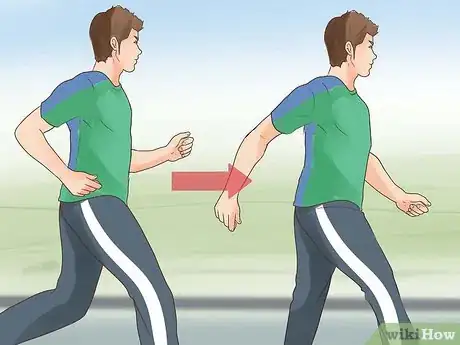

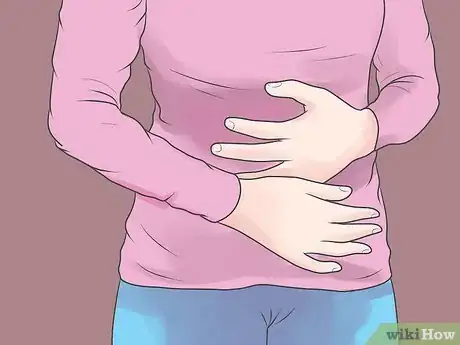
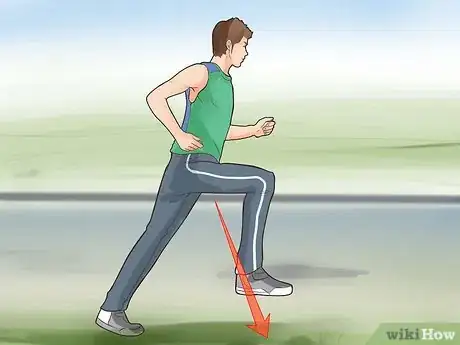


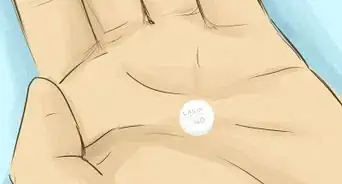




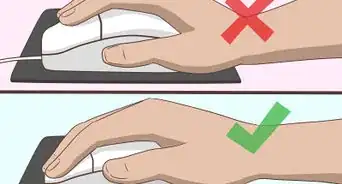
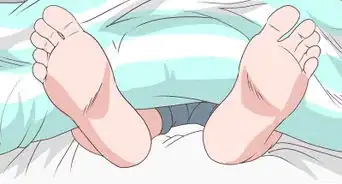
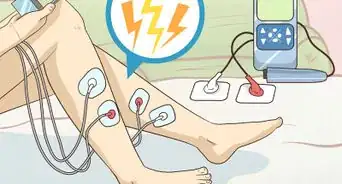










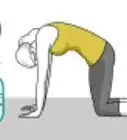
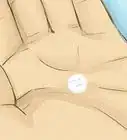



































Medical Disclaimer
The content of this article is not intended to be a substitute for professional medical advice, examination, diagnosis, or treatment. You should always contact your doctor or other qualified healthcare professional before starting, changing, or stopping any kind of health treatment.
Read More...